Implacable enemy of the Spaniards Francois Olone
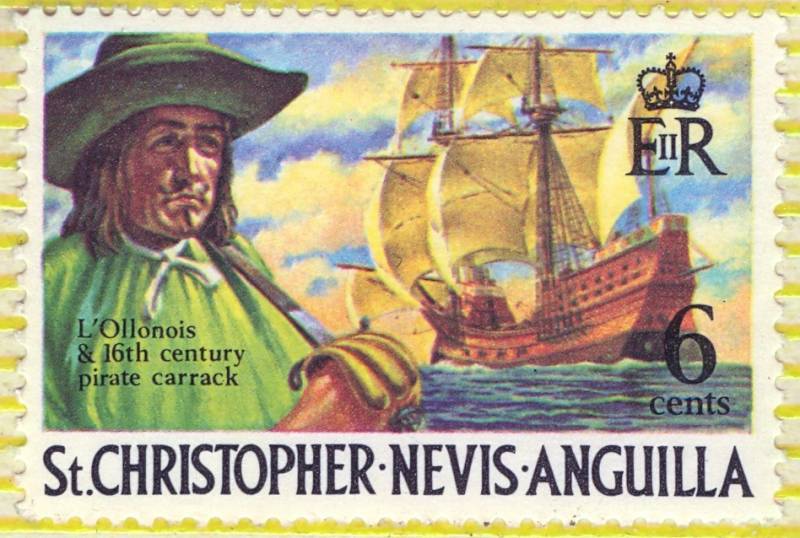
Piracy is one of the oldest professions; researchers believe that it originated simultaneously with navigation. It was known in Ancient Egypt, Greece, Rome; the typical pirates were the Vikings, who terrified all of Europe for about three centuries.
A new impetus to piracy was given by the era of the Great Geographical Discoveries and the beginning of the struggle of the leading maritime powers, first for the conquest and then for the redistribution of open lands. Initially, Spain and Portugal succeeded in this struggle, but by the end of the XNUMXth century, England and France, and a little later the Netherlands, came into sharp competition with them.
The golden age of maritime robbery was between the 1650s and 1730s. Of course, to consider piracy of this period only as robbery would be a great simplification. In this era, more than ever, piracy was an integral part of big politics. The struggle for the redistribution of the colonies and the wealth located in them intensified, and pirates, many of whom received letters of marque from kings and governors, allowing them to legally plunder enemy ships and ports, came in very handy.
It would be a big mistake to consider Spain, on whose ships and colonies most of the attacks were carried out, in this struggle, as an innocent victim. In the New World, the Spaniards captured vast territories from California to Cape Horn, only the Portuguese controlled Brazil. For many decades, these colonies were fully exploited; rivers of gold and silver flowed into Spain.
But when the Spanish Empire weakened somewhat, and its competitors grew stronger, there were immediately many who wanted to “take and divide” all this wealth. Therefore, in this confrontation, Spain was also a predator, and differed from England or France only in that it was a decrepit predator, whose teeth began to fall out and claws became dull. Naturally, young and strong competitors could not help but take advantage of this.
We are starting a series of articles about famous pirates of the Golden Age, and the first of them will be Francois Olone, the most implacable enemy of the Spaniards of his time.
From France to the West Indies
Jean-François No, who entered history under the nickname Olone, was born around 1630 in the town of Les Sables d'Olonne, in the French province of Poitou. The nickname he subsequently received means “a native of Olon.” At the age of 20, he enlisted as a soldier in the West Indies and served on a plantation. Then he joined the Buccaneers of Hispaniola, among whom he lived for several years. And only after that - to the filibusters of Tortuga Island.
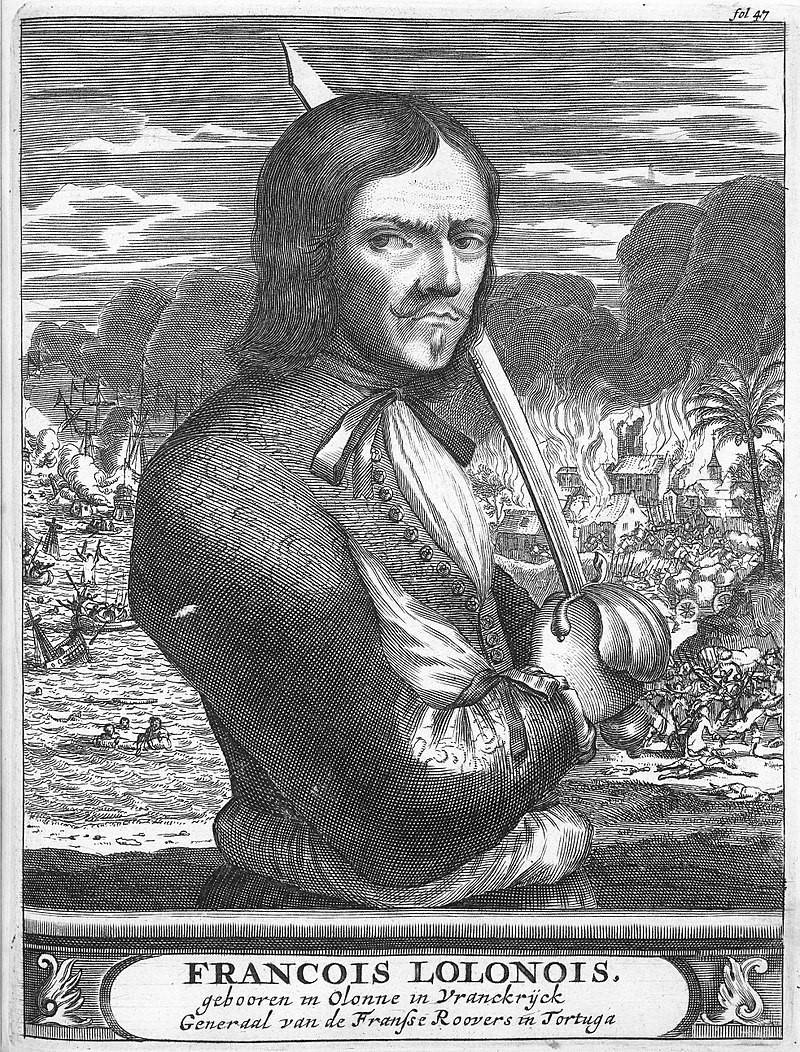
Francois Olone
At that time, a long and grueling war was going on between France and Spain. Ohlone participates as an ordinary pirate in raids on Spanish settlements and in naval battles, and was able to distinguish himself, which attracted the attention of the governor of the island du Rosset, who in 1662 entrusted him with command of the ship. Having become captain, Ohlone captured several Spanish ships, but his own ship was so badly damaged in battle that it could not continue sailing. The next governor, Deschamps de la Place, gave Olona another ship and provided him with a letter of marque.
However, Olone also did not sail for long on the second ship. At the end of 1664, the ship sank off the coast of the Spanish city of Campeche. Most of the team was able to survive and made it ashore, but here Spanish soldiers were already waiting for them. A stubborn battle ensued, but the forces were unequal, and soon the entire Olone team was killed by the Spaniards.
He himself, having been wounded, smeared himself with blood and pretended to be dead in a heap of corpses. After waiting for the Spaniards to leave, he bandaged his wounds, changed into the uniform of a dead Spanish soldier and went to Campeche, where he was able to convince several slaves, promising them freedom, to steal a fishing boat. On this boat with one sail, Ohlone traveled 1 km in waters infested with Spaniards, without encountering a single ship. So he returned to Tortuga. The slaves, as promised, were released.
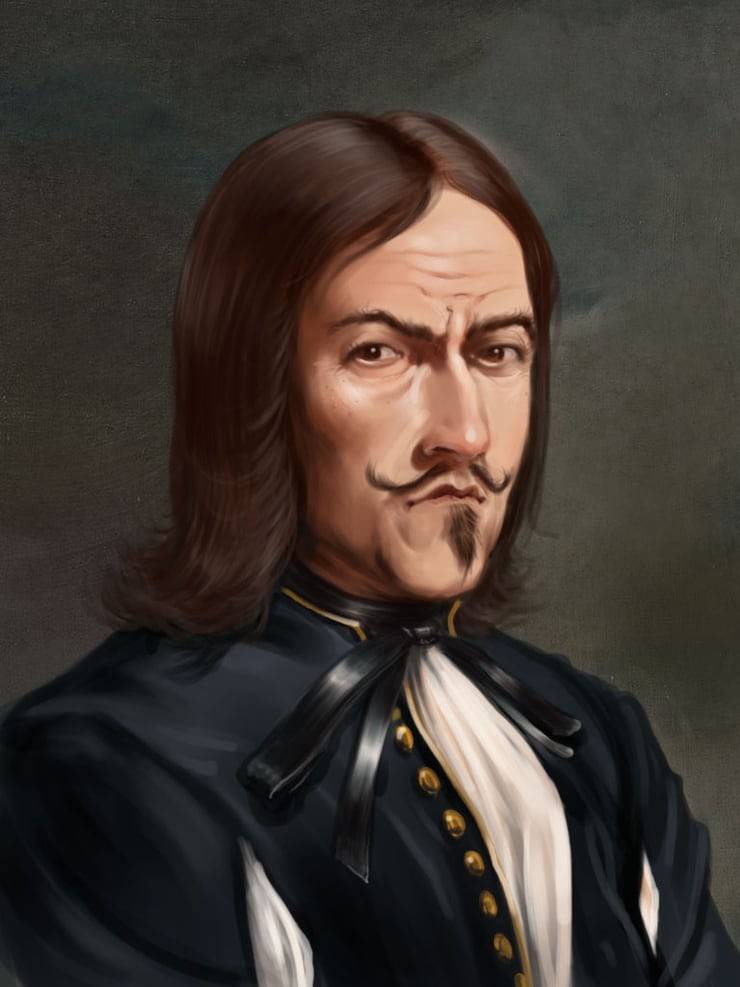
The following year, 1665, Ohlone was forced to start all over again. After the loss of the second ship, the colonial authorities lost confidence in him. Therefore, he, having assembled a new team of about 20 people, including one surgeon, got hold of a small longboat and went out to sea on it again.
It didn't take long to find new prey. A Spanish 10-gun frigate with a crew of 90 people on board entered the mouth of one of the Cuban rivers (and Cuba was then a colony of Spain). Having approached it unnoticed in a longboat and several canoes, Ohlone suddenly attacked and, after a short battle, captured the ship and the surviving prisoners. From them he learned that the Cuban governor had given the order to hang all captured pirates.
And as a retaliatory measure, as well as in revenge for the death of his people in Campeche, Olone personally cut off the heads of all the captured Spaniards with a saber. Eyewitnesses later claimed that after each severed head he licked the blood from the blade, commenting on the difference in taste.
Ohlone left only one prisoner alive. He ordered him to deliver a letter to the Cuban governor, where he wrote:
Next, he described in vivid colors what exactly he would do to the Spanish governor if he was captured by him. They say that when the governor read this letter, he almost had a heart attack.
Capture of Maracaibo and Gibraltar
By this time, Olone's fame as a successful captain and implacable enemy of the Spaniards had spread far beyond Tortuga. Therefore, there are now many more people wishing to take part in his campaigns. In a short time, Ohlone recruited 400 people, among whom, in addition to ordinary pirates, were naval and land officers, as well as two nephews of the governor of Tortuga.
There was peace between France and Spain at this time, however, when it comes to the possibility of plunder, this was never an obstacle. And Spain had plenty of enemies, besides the French. Therefore, the governor presented Olona with a Portuguese letter of marque, in which it was written that the Portuguese colonial authorities should assist the holder of this document in every possible way.
In April 1666, Ohlone went to sea on five ships. The first one on his way was a Spanish merchant ship loaded with cocoa. After a short battle he was captured.
Following him, the pirates met another ship loaded with guns and gunpowder. He suffered the same fate. Ohlone landed all the captured prisoners on the shore.
The goal of the campaign was the city of Maracaibo, in what is now Venezuela. In front of the city there was a small fort armed with 16 guns; apart from it, Maracaibo had no fortifications. Having suppressed the fort with powerful artillery fire, Ohlone landed troops, who during the assault captured the city without much difficulty. Three quarters of its population managed to flee, taking their property, so the booty of pirates in Maracaibo was much less than expected. Olone ordered to torture local residents so that they would give him the places where the treasures were buried. The total production was estimated at 80 thousand piastres.
But even this was not enough for the pirates. Two weeks later, Ohlone, inspired by an easy victory, set out on a campaign against the nearby city of Gibraltar. However, it was already fortified incomparably better than Maracaibo. Its walls were defended by a battery of 22 guns, and there was also a redoubt with 8 guns nearby. Upon learning of the fall of Maracaibo, the governor of Gibraltar put all able-bodied men under arms, as a result of which the city's garrison increased to 800 people.
In addition, the surrounding area of Gibraltar was a forest, in some places very swampy. There was only one road leading to the city, which the governor ordered to be filled with felled trees. Instead, another road was cut through, leading straight into the swamp.
Ohlone, who allocated 350 pirates for the assault, did not know about all this. His people took the wrong road, ending up in a swampy area. Full of the desire to capture the city at any cost, the pirate commander ordered to cut branches and walk along them, which was immediately carried out.
As soon as the Spaniards noticed the pirates, they immediately opened fire on them. Although the attackers marched in loose formation, their losses soon became noticeable. And when the Spaniards fired a volley of grapeshot at close range, Olone ordered a retreat. Encouraged by this, the Spaniards, led by the governor, went on a sortie. But as soon as they overtook the pirates, they turned around and rushed to attack.
In hand-to-hand combat, the pirates had no equal, so in a fierce battle they quickly began to gain the upper hand, drove the Spaniards towards the city and burst into it on their shoulders, starting the robbery. After the battle, the winners counted 70 French and more than 500 Spanish corpses.
Like Maracaibo, Gibraltar was completely sacked. After this, knowing that the Spaniards probably hid some of the valuables, Olone ordered them to pay an indemnity of 10 piastres, threatening otherwise to burn the city. And having returned to Maracaibo, he imposed another indemnity on the residents of the city - already 000 piastres. This amount was immediately collected.
In general, the campaign brought an impressive income: 250 piastres in cash and another 000 piastres of various valuables and property. The cocoa cargo seized on the ship was sold in France for 100 livres. Olone gave 000% of the total value of the loot to the governor of Tortuga, and the pirates divided the rest among themselves.

Ohlone on a postage stamp
Last campaigns and death
After the capture of Maracaibo and Gibraltar, Ohlone's fame as a successful pirate spread even further. Even the British offered him to join them in their service. But Jean-Francois did not change the flag.
When in the spring of 1667 the money he had looted the previous year dried up, he began to prepare a new campaign, this time to Nicaragua. About 600 pirates gathered under the banner of Ohlone, including the famous captains Moses Vauquelin and Pierre Picardie, and they sailed on five ships for new prey.
But now luck has turned against Ohlone. His ships became calm and were carried by the current to the Gulf of Honduras. Since there were many people on the Ohlone ships, food supplies ran out very quickly, and hungry pirates landed ashore, plundering all the Spanish villages that came their way.
Ohlone captured several Spanish prisoners and asked them if they knew the way to the city of San Pedro, where there could well be rich booty. But the Spaniards unanimously answered that they did not know the road there. Olone’s reaction to such intractability was described by Alexander Exquemelin in his book “Pirates of America”:
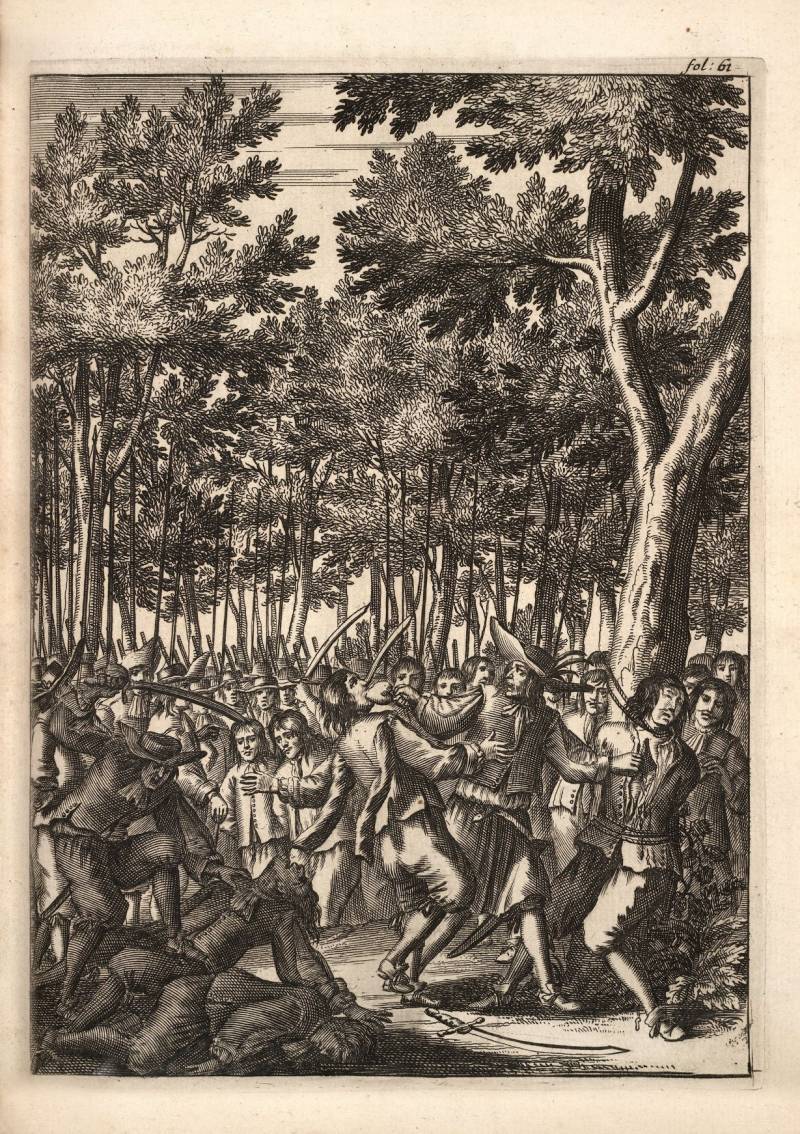
Ohlone interrogates and executes Spanish prisoners. Engraving from Exquemelin's book
This method of persuasion worked, and the Spaniards showed the way. But the garrison of San Pedro also prepared for the meeting. Along the way, the pirates were repeatedly ambushed, suffering losses. When they finally approached the city, they were met with powerful cannon and rifle fire.
The battle for the city lasted all day, but by the evening the Spaniards still threw out the white flag. The surviving remnants of the Spanish garrison, under the terms of surrender, were able to leave San Pedro. However, the booty in the captured city turned out to be meager, and the pirates, having suffered heavy losses in the battles for it, were in despair.
Soon the pirates learned from two captured Indians that a Spanish ship was about to arrive in the bay with some valuable cargo. We had to wait a long time for him - three months. And when the expected ship finally arrived and was captured in battle, it turned out that its cargo was not gold or silver, but just paper and iron.
After this, a significant part of the pirates, including Vauquelin and Picardy, left Olone, completely disappointed in him. About 250 people remained with Ohlone, and instead of five ships he now had one at his disposal.
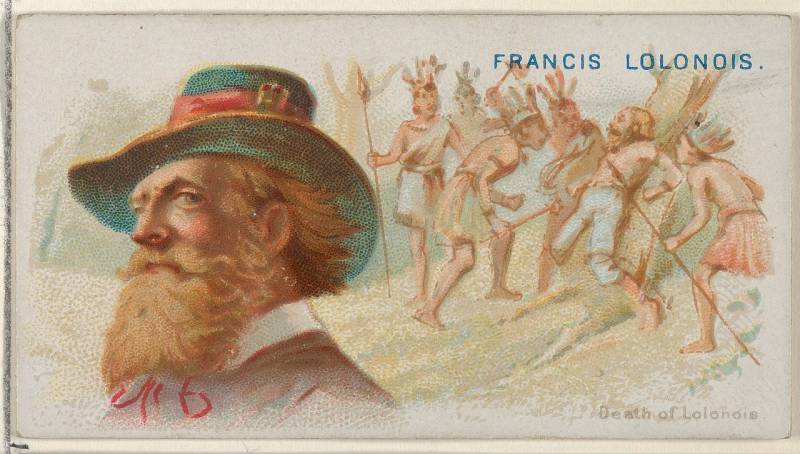
Death of Ohlone. French postcard image
Ohlone decided to go to the shores of Nicaragua. But his luck completely ran out: off the coast of one of the islands, the ship hit a reef, and the entire crew was forced to go ashore. Since it was not possible to move the ship, they decided to dismantle it and use the materials to build a small barcalone with one sail. A few months later, when the barkalon was ready, with part of the crew (since the ship could not accommodate everyone), Ohlone went to the coast of the mainland with the goal of capturing a canoe there for the rest of his comrades.
Having stumbled upon an outnumbered Spanish garrison along the way, Ohlone was defeated and retreated.
Finally, in September 1668, a now small detachment of pirates came across cannibalistic savages. In the battle with them, most of the detachment was killed, and Olone himself died. One of the surviving pirates later told about the sad end of his commander, who, apparently, was roasted and eaten.
Information